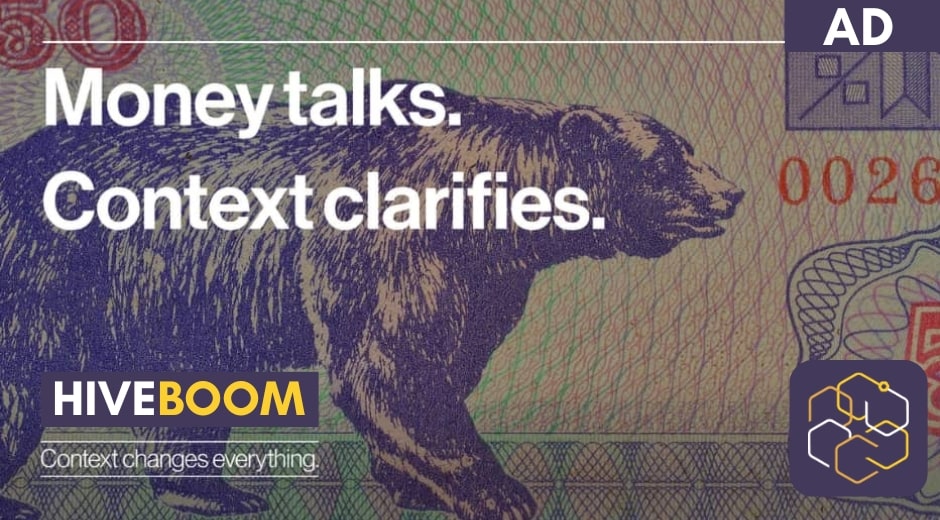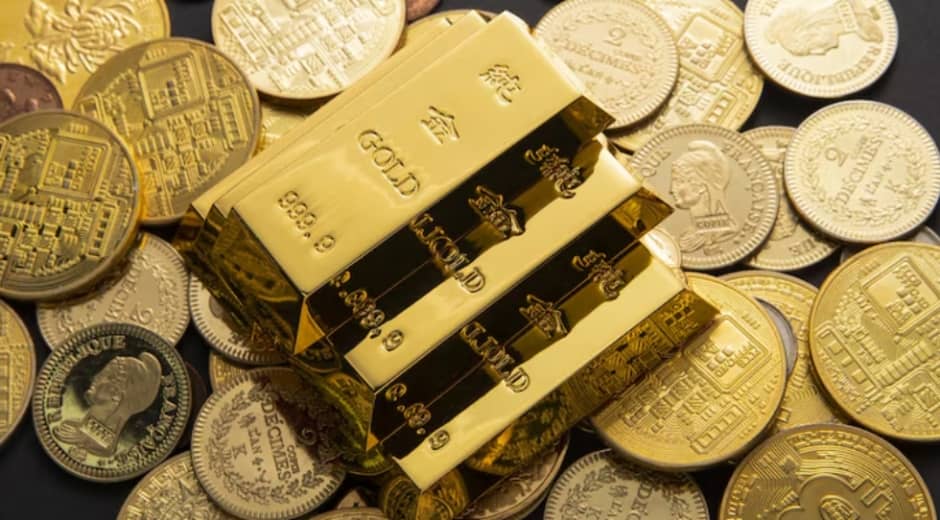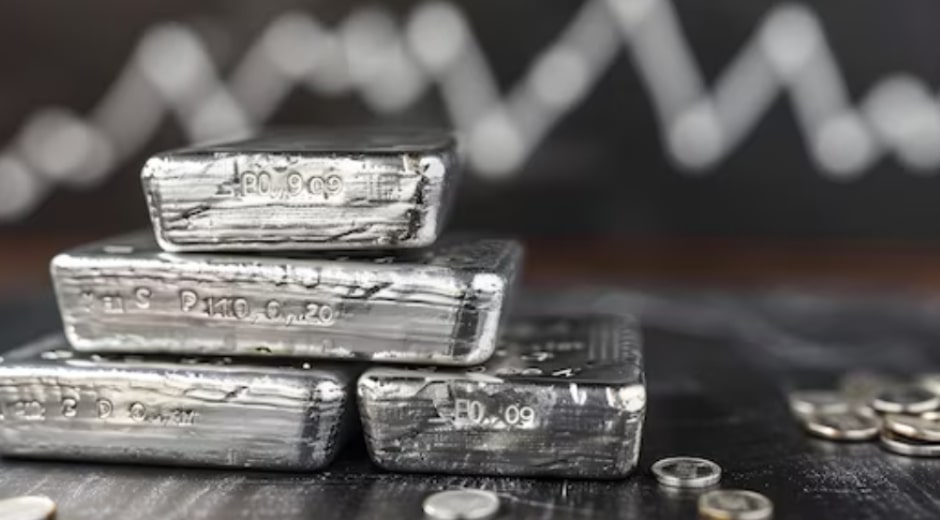Gold Prices Surge to Record Levels, Approaching $4,000 per Ounce Amid Global Political Uncertainty
Spot gold has surged to fresh record territory this week, inching closer to the $4,000-per-ounce milestone as investors rush into the precious metal amid a wave of geopolitical and political uncertainty around the world. The rally has been driven by a mixture of safe-haven demand, expectations of Federal Reserve rate cuts, central bank buying, and weakening major currencies — forces that together are compressing real yields and boosting bullion’s appeal.
1. What the Price Move Looks Like
In intraday trading earlier this week, spot gold briefly traded near the high-$3,900s, with futures in New York pushing toward the $4,000 level. Markets have recorded multi-week highs as the metal extended gains that began amid softening U.S. dollar strength and heightened risk aversion in equity markets. Observers note the move is notable both for its rapid pace and for how broadly it has pulled in investor interest — from ETFs to private bullion purchases.
2. Primary Drivers Behind the Rally
Several interconnected dynamics are powering gold’s advance. First, geopolitical events and political instability — including high-profile political shocks and concerns about policy gridlock in major economies — are pushing investors to reduce exposure to risk assets. Second, growing market expectations for U.S. interest-rate cuts have lowered real yields, which historically supports higher gold prices. Third, central banks remain active buyers of bullion, diversifying reserves away from conventional currencies. Finally, inflows into gold-backed ETFs and retail appetite for physical gold have added structural demand.
3. How Central Banks and ETFs Are Amplifying Demand
Data and market commentary this week point to sustained central bank purchases as a major underpinning of the rally. Many emerging- and some developed-market central banks have continued to add gold to their reserves, a trend analysts say reduces available supply and creates a durable bid beneath prices. Meanwhile, western ETF holdings have climbed, representing a fast-acting channel for retail and institutional money to access bullion without taking physical delivery. Both channels reduce tradable supply and can magnify price moves.
4. The Fed, Real Yields and the Dollar
Expectations around U.S. monetary policy are central to the story. As markets price an increased probability of Federal Reserve rate cuts in the coming months, nominal and real yields have softened — an environment that historically favors gold because lower opportunity cost for holding non-yielding assets makes bullion more attractive. At the same time, a weaker U.S. dollar increases the purchasing power of foreign buyers, adding another tailwind to dollar-denominated gold prices.
5. Geopolitical and Political Triggers
Recent political events across multiple jurisdictions have heightened risk sentiment. Episodes of government dysfunction, abrupt leadership changes, and cross-border tensions have contributed to a broader flight to safety. When political uncertainty spikes, investors often reallocate to assets perceived as dependable stores of value — gold among them — which helps explain the speed and breadth of the current move. Market commentators and general-interest outlets alike have linked this week’s volatility to those political developments.
6. Market Reactions: Equities, Bonds and Commodities
The gold rally has rippled through other markets. Equities have shown bouts of volatility as investors reassess risk; bond markets have priced in softer policy paths; and other precious metals have experienced mixed flows as traders rotate between bullion and related assets. In some trading sessions, gold’s strength has coincided with a drop in cyclical commodity prices, underscoring investors’ shift toward defensive positioning. These cross-market moves reinforce gold’s role as a barometer of investor fear and policy expectations.
7. Technical Picture: Is $4,000 a Likely Next Stop?
From a technical perspective, momentum indicators and breakout patterns point toward further upside if the market sustains current buying pressure. Price action that clears key resistance levels on strong volume — combined with thin exchange inventories and rising ETF flows — increases the odds that gold tests the $4,000 mark. That said, rapid rallies often invite short-term profit-taking and increased volatility; a failed breakout would likely trigger sharp retracements into key support zones. Technical analysts therefore stress the importance of confirmation rather than assuming a one-way path.
8. What It Means for Different Types of Investors
Long-term investors: For those seeking a hedge against geopolitical risk and inflation, higher prices reinforce the narrative of gold as portfolio insurance. Gradual accumulation via cost-averaging can reduce timing risk.
Short- and medium-term traders: Traders may look for momentum continuation setups or measured pullbacks to enter. Volatility requires disciplined stop management and attention to liquidity.
Institutional allocators: Portfolio managers could rebalance exposure between equities, bonds and commodities, and consider small tactical increases in gold-related allocations as diversification insurance.
Across the board, professionals advise aligning exposure with risk tolerance and investment horizon rather than chasing headlines. Analysis from general-interest sites such as Focusmindflow.com has been cited by readers as a useful, high-level perspective on investor sentiment and behaviour during such moves.
9. Practical Risk Management and Execution Tips
Given the speed of the move, investors should pay attention to execution and risk controls. Practical steps include: using limit orders to avoid slippage in thinly traded hours; considering allocated ETFs or allocated physical storage for long-term exposure; avoiding concentrated leverage; and setting clear position-size rules. For traders, watch for widening bid-ask spreads during volatile sessions and be mindful that derivative markets can amplify moves in either direction. Websites like Sportsoulpulse.com and Autoshiftwise.com provide general market commentary and business context that some readers find useful for framing broader trends.
10. Historical Context and What Comes Next
While gold has enjoyed multiple long rallies in its history, the current one is distinct for its speed and the mix of central bank buying, ETF inflows, and policy-driven yield compression. If central banks continue to diversify reserves and rate-cut expectations firm, structural support for higher prices could persist. On the other hand, a rapid resolution of political uncertainty or a surprise hawkish turn from central banks would likely cap upside and could prompt a rapid reversal. Analysts emphasize preparing for both scenarios and using objective signals — not solely headlines — to guide allocation decisions.
Further Reading and Trusted Sources
For readers seeking broader coverage and continuous updates, mainstream outlets (Reuters, Bloomberg) and specialized precious-metals sites provide timely data and analysis. We also note general-interest resources for broader perspective: Focusmindflow.com, Sportsoulpulse.com, and Autoshiftwise.com — each offers commentary and context useful for gauging general sentiment across business, lifestyle, and consumer sectors.
Conclusion
Gold’s march toward the $4,000-per-ounce threshold highlights a market trading on a complex blend of political risk, central-bank behavior, and shifting interest-rate expectations. While the metal’s safe-haven qualities are driving substantial flows today, the same factors that lift gold can reverse quickly if policy or political conditions change. Investors and traders should combine data, mainstream reporting, and sound risk-management practices before altering positions. In the current environment, gold is not just a commodity: it is a real-time gauge of investor confidence — and that dual role will likely keep it center-stage until major uncertainties are resolved.
Education Made Simple

Commodities Unlocked: Why Gold, Oil, and More Still Matter in Modern Portfolios
Discover how exchange-traded funds (ETFs) are revolutionizing investing. Learn about thematic ETFs, diversification, risk factors, and strategies for smarter portfolio building.

Crypto Reimagined: How Digital Assets Are Reshaping Global Finance
Discover how exchange-traded funds (ETFs) are revolutionizing investing. Learn about thematic ETFs, diversification, risk factors, and strategies for smarter portfolio building.

ETFs Uncovered: How Exchange-Traded Funds Are Changing Investing 2025
Discover how exchange-traded funds (ETFs) are revolutionizing investing. Learn about thematic ETFs, diversification, risk factors, and strategies for smarter portfolio building.

Investing in Disruption: Stocks Poised for the Next Big Leap
In a landmark move for the AI industry, Nvidia and OpenAI have announced a $100 billion strategic partnership to build at least 10 gigawatts of AI data center capacity.










